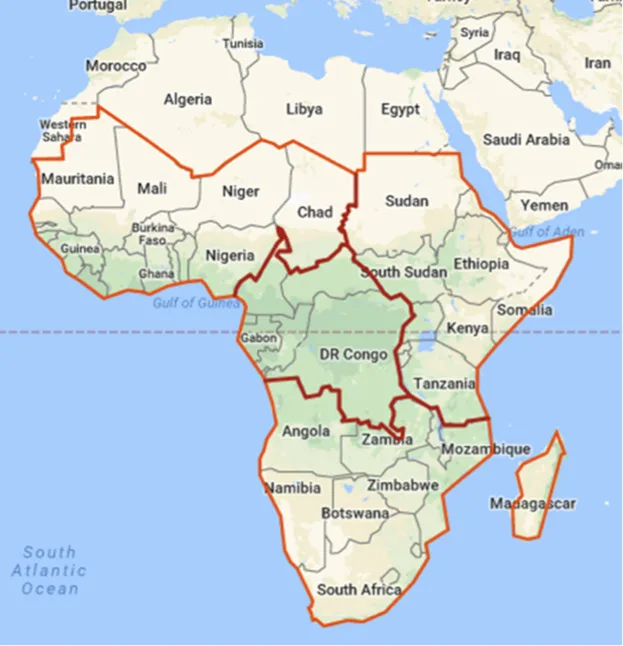Saharan Africa – 8 October 2025
The escalating sovereign debt crisis in Sub-Saharan Africa (SSA) has reached a critical stage, with the number of countries either in or at high risk of debt distress nearly tripling over the last decade. Official figures reveal a perilous trajectory, soaring from eight countries in 2014 to 23 countries in 2025—a figure representing nearly half of the nations in the region. This dramatic increase is not merely a financial statistic; it signals a mounting humanitarian and development emergency that threatens to derail decades of progress and further jeopardise the region’s ability to fund essential services like healthcare and education.
Headline Points
* Debt Tripled: The number of SSA countries in or at high risk of debt distress has surged from 8 in 2014 to 23 in 2025, an increase of nearly 300%.
* Debt Burden: The median public debt-to-GDP ratio for SSA countries almost doubled in the last decade, rising from 28.8% in 2012 to 59.1% in 2022.
* Service Costs: Interest payments now consume an alarming amount of government revenue, with at least 30 African countries spending more on interest than on public health.
* Primary Drivers: The crisis is driven primarily by external shocks—including the COVID-19 pandemic, the war in Ukraine, global inflation, and rising interest rates in advanced economies—compounded by a significant shift toward high-cost private and commercial borrowing.
* Restructuring Failures: The G20 Common Framework for debt restructuring has been widely criticised as being slow and ineffective, offering minimal relief to countries like Ghana, Zambia, Ethiopia, and Chad.

A Decade of Compounded Shocks
The current crisis is the culmination of compounding global and domestic factors that began accelerating after 2010. Following major debt relief initiatives in the early 2000s, African nations embarked on a new phase of borrowing to finance crucial infrastructure and development needs. The volume of nominal public debt in Sub-Saharan Africa has since more than tripled since 2010, reaching an estimated $1.14 trillion by the end of 2022.
This borrowing spree, however, coincided with a crucial shift in the creditor landscape. Historically, SSA debt was largely held by multilateral institutions and bilateral partners (like the Paris Club). Over the last decade, a significant portion of the debt has shifted to high-cost commercial creditors and private investors, a group that is less inclined to offer concessional terms. By 2020, the share of private creditors holding African external debt had grown to over 41%, complicating efforts to secure timely and comprehensive debt restructuring.
The Role of Global Turmoil
While issues of domestic governance and fiscal management contribute to vulnerability, experts highlight external, non-domestic shocks as the immediate catalysts for the current wave of distress:
* Global Health Crisis (COVID-19): The pandemic forced governments to increase spending on public health and stimulus, while tax and export revenues plummeted, widening fiscal deficits.
* Geopolitical and Macroeconomic Fallout: The war in Ukraine triggered soaring global inflation, particularly for food, fuel, and fertiliser. Simultaneously, currency depreciation against the US Dollar—driven by aggressive interest rate hikes in developed economies—drastically increased the local currency cost of servicing dollar-denominated debt.
* High Interest Burden: The consequence of rising debt and costlier commercial loans is a crippling debt service burden. The median interest payments as a share of government revenue have more than doubled from 4.6% in 2012 to 10.4% in 2022. For over 30 African countries, the cost of paying interest now surpasses essential public health expenditure.
Restructuring Mechanisms Under Fire
The failure of global financial architecture to respond effectively has exacerbated the crisis. The G20 Common Framework for Debt Treatment, created to assist nations affected by the pandemic, has proven slow, cumbersome, and ineffective. Countries like Zambia, Ethiopia, and Chad have faced protracted negotiations, with creditors often having conflicting interests and no clear mechanism to enforce fair comparability of treatment across all lender types.
The World Bank and the IMF continue to raise the alarm, stressing that sustained debt distress is a major barrier to development, diverting critical resources away from poverty reduction and hindering the region’s path toward achieving the Sustainable Development Goals (SDGs). Without a more efficient and comprehensive international approach to debt relief, the future of nearly half of Sub-Saharan Africa remains precariously balanced on the edge of a financial precipice.
